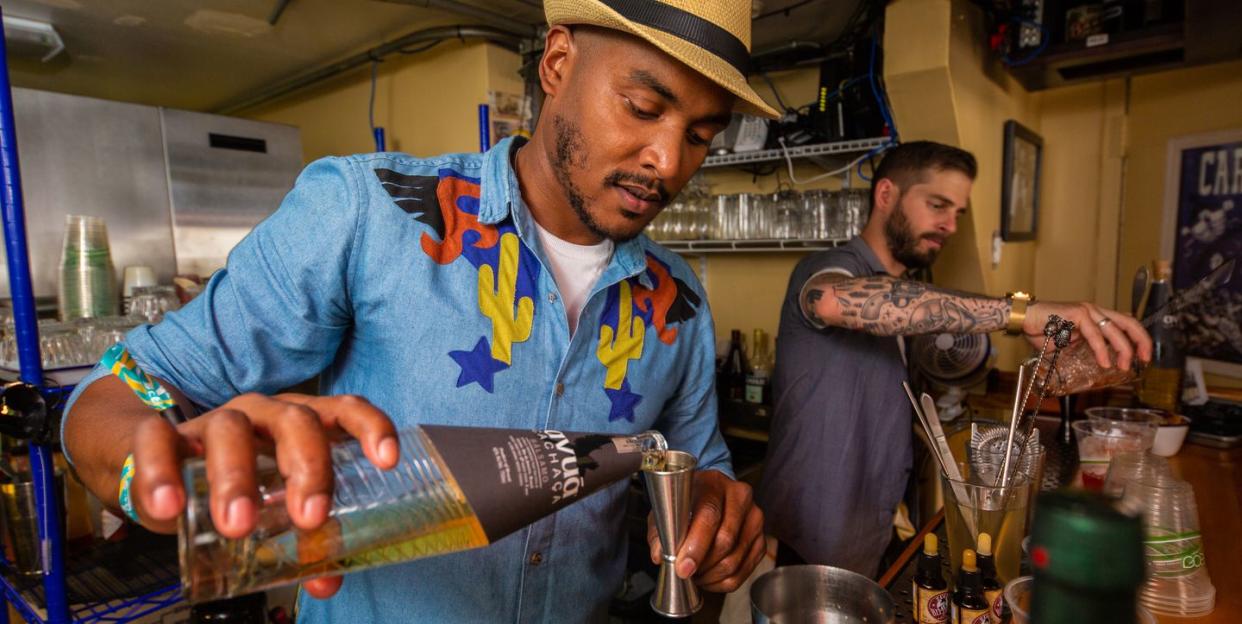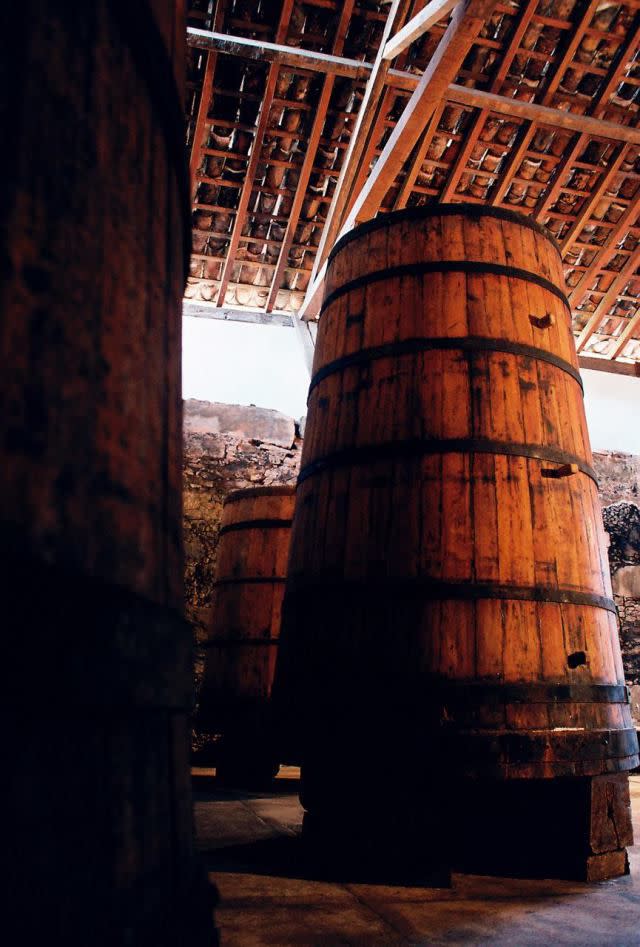The Best Booze Since Whiskey Comes from Brazil

A winemaker will probably shank me on Twitter for saying this, but cocktails are the most scientific of the adult beverages. From the distillation of the component liquors to the flaming of an orange peel over a final drink, every step involves biology, chemistry, and physics (and sometimes fire).
But which of the base liquors within a cocktail is the most scientific? Gin has a strong argument in its favor, being both distilled and steeped in a carefully curated blend of plants. And of course many would argue for whiskey, which gains its flavor after resting in a barrel of a very specific wood (usually oak) with a very specific char (often Number 4).

But there’s another contender-one that was probably obvious to anyone who’s ever been to Brazil, but maybe not to many others: cachaça. A clear Brazilian spirit made from a mash of chopped up sugarcane, cachaça usually appears in the caipirinha, which is a lot like a mojito made without mint. But, as the third most consumed spirit in the world (behind the Chinese spirit baijiu and vodka), it also appears in many other places, even taking the place of gin in drinks like the negroni. And it’s not even always clear.
“There are over 30 types of wood that cachaça is aged in,” says Pete Nevenglosky, founder of Avúa brand cachaça. The tradition started roughly the same way aged whiskey did-many cachaça distilleries were located along the coast in Rio state, and distillers needed to ship it into mining communities in the interior of the country. They began shipping the spirit in French Oak barrels, and everyone quickly realized that the addition of wood made for a mellower, tastier spirit.
Oak-aging is all well and good, but if you’ve ever had whiskey, chances are you already know how oak tastes. (To borrow a phrase from Willy Wonka: “The snozberries taste like snozberries.”) “In classic Brazilian fashion, it was like, hey, we have all these other woods. Let’s try ’em out,” says Nevenglosky. Distilling began to require amateur botany, and now there are cachaças aged in resinous Brazilian woods such as amburana, bálsamo, tapinhoã, and jequitiba rosa. Unlike oak-aged whiskeys and cognacs, these spirits get their flavor from the oils and saps of the woods. “The barrels aren’t toasted,” says Nevenglosky. (Also, they’re 15 feet tall.)
As for how to use these strange liquors-which all taste surprisingly different from one another-Nevenglosky has tips: Try them in place of whiskey in cocktails like an old fashioned, taste them all in a row like beers, or spruce up egg nog with amburana-aged cachaça, which has flavors of cinnamon, nutmeg, and banana bread, and convince your family you’re the best bartender this side of the Amazon.
Want to learn more? Nevenglosky let us taste test a few of Avuá’s offerings on the Most Useful Podcast Ever’s holiday episode, out December 21.
('You Might Also Like',)

